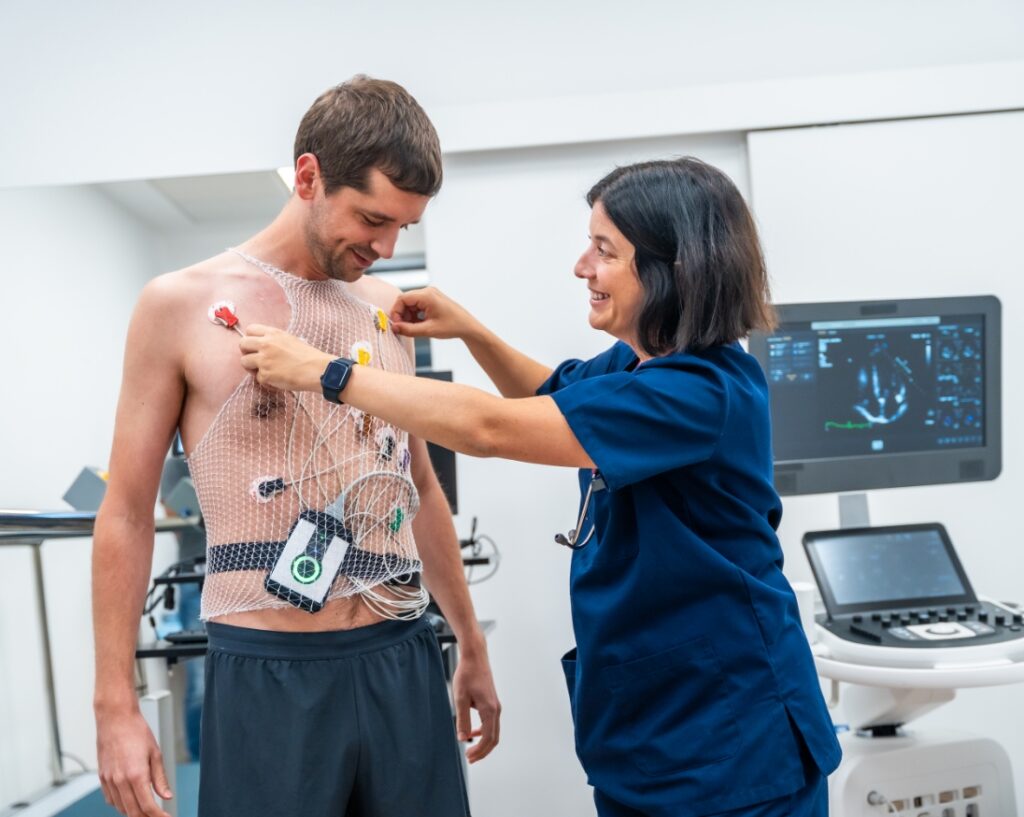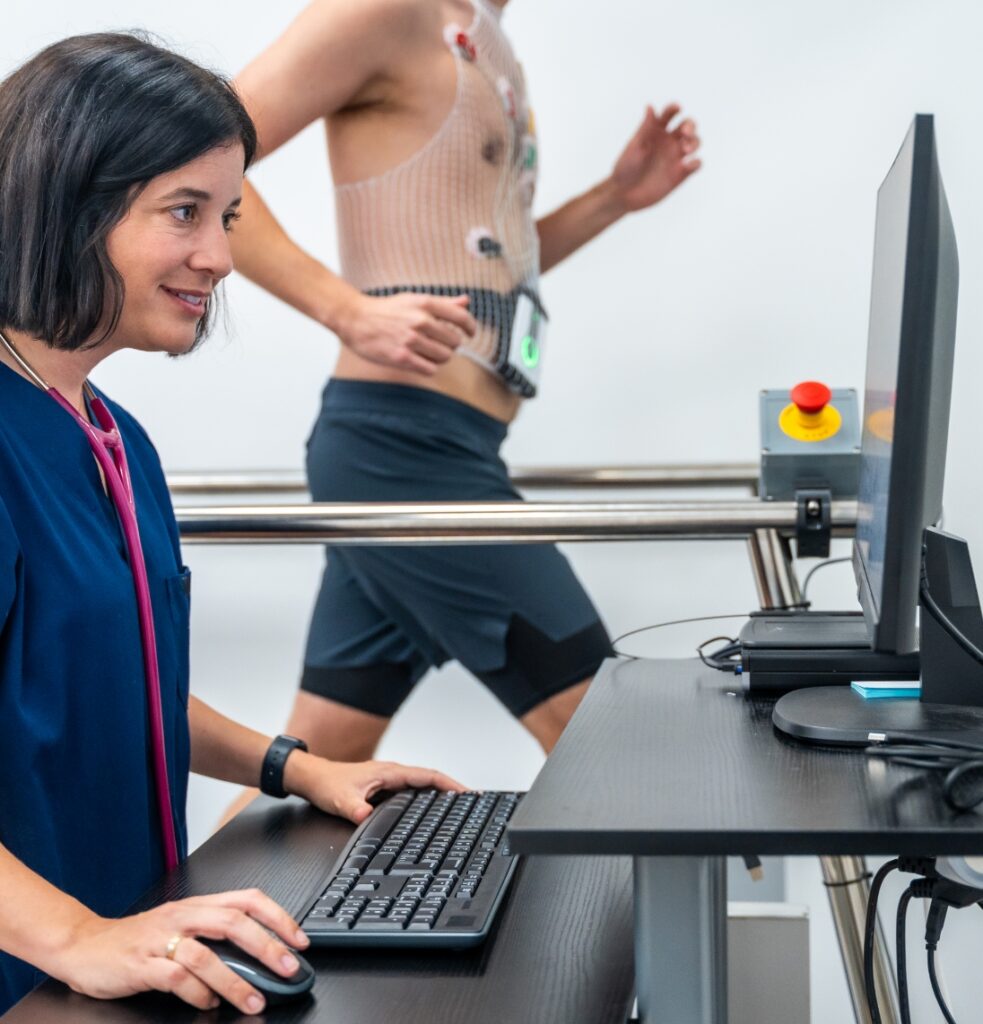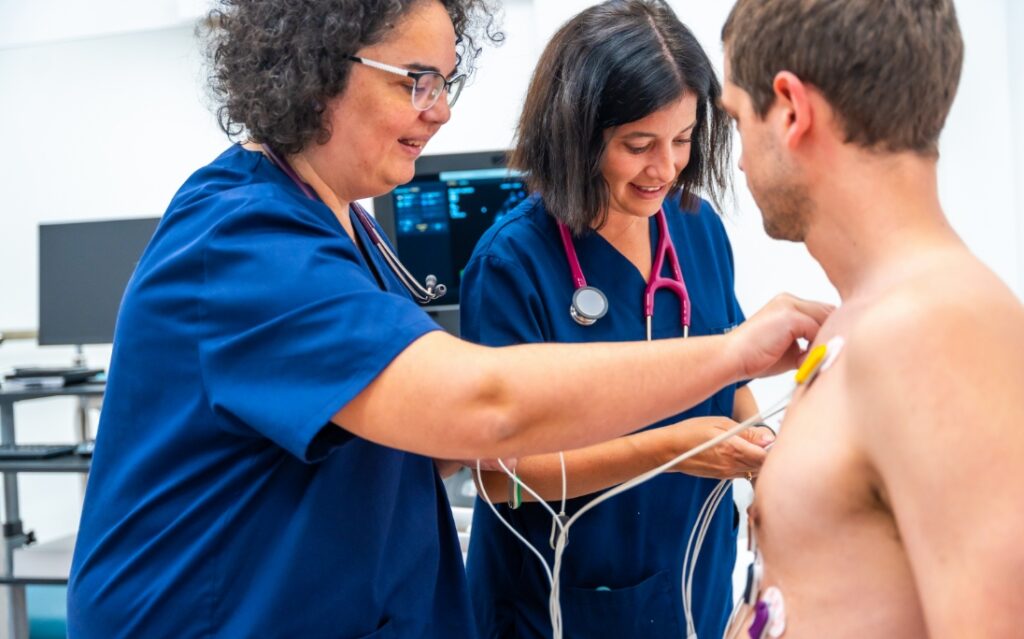Exercise Stress Test

A Stress Test Evaluates Your Heart's Performance During Physical Activity.
You will be asked to walk on a treadmill while connected to an ECG machine. The intensity of the exercise (treadmill speed and gradient) will gradually increase to raise your heart rate. You usually do not need to run on the treadmill, mostly a fast paced walk suffices. Most patients walk on the treadmill for between 4 and 9 minutes. Your blood pressure, heart rate, and ECG will be monitored throughout the test. This test allows your healthcare provider to assess how well your heart functions under stress and identify any potential abnormalities. You may be monitored for a period after exercising to observe your recovery.
What is an Exercise Stress ECG?
An exercise ECG is performed to assess the heart’s response to stress or exercise. The ECG is monitored while a person is exercising on a treadmill.
An ECG tracing will be taken at certain points during the test in order to compare the effects of increasing stress on the heart. Periodically, the incline and treadmill speed will be increased in order to make exercise more difficult for the person being tested. The person will exercise until reaching a target heart rate (determined by the doctor based on age and physical status) or until unable to continue due to fatigue, shortness of breath, chest pain, or other symptoms. Changes in an ECG during exercise compared to the resting tracing may indicate one or more of several heart-related conditions.
This electrical activity of the heart is measured by an electrocardiogram. By placing electrodes at specific locations on the body (chest, arms, or legs).

Reasons Why An Exercise Stress ECG Would Be Requested
Reasons for your physician to request an exercise ECG include, but are not limited to, the following:
- To assess for suspected coronary artery disease (blocked arteries in the heart)
- To assess stress or exercise tolerance in patients with known or suspected coronary artery disease
- To determine limits for safe exercise in patients who are entering a cardiac rehabilitation program and/or those who are recovering from a cardiac event, such as a heart attack (myocardial infarction, or MI) or heart surgery
- To assess heart rhythm or electrical activity during exercise
- To evaluate heart rate and blood pressure during exercise
There may be other reasons for your doctor to recommend an exercise ECG.

Risks of the Procedure
Because of the stress the heart incurs during the procedure, there is a small chance for chest pain, high blood pressure, irregular heartbeats, dizziness, nausea or fatigue. Fainting, cardiac arrest, or serious heart rhythm problems are exceptionally rare. Your overseeing doctor will assess any concerns promptly.
For safety reasons, generally you will not be requested to perform a stress test if you have:
- Aneurysm (a dilation of a part of the heart muscle or the aorta)
- Unstable angina (uncontrolled chest pain)
- Severe heart valve disease
- Severe congestive heart failure
- Recent myocardial infarction (also called MI, or heart attack)
- Severe hypertension (high blood pressure)
- Uncontrolled irregular heartbeats
During the Procedure
Generally, an exercise ECG follows this process:
1. You will be asked to open your blouse or shirt in the front (undergarments on women should remain worn whilst men may be asked to remove their shirts). The technician will ensure your privacy.
2. If your chest is very hairy, the technician may shave or clip small patches of hair, as needed, so that the electrodes will stick closely to the skin.
3. Electrodes will be attached to your chest and abdomen.
4. A blood pressure cuff will be attached to your arm while you are sitting down. Initial, or baseline, ECG and blood pressure readings will be taken while you are sitting down and standing up.
5. You will be instructed on how to walk on the treadmill. You will be told to let the technician, doctor, or nurse know if you begin to have any chest pain, dizziness, light-headedness, extreme shortness of breath, nausea, headache, leg pains, or other symptoms during exercise.
6. You will begin to exercise at a minimal level. The intensity of the exercise will be gradually increased on the treadmill by increasing the incline and speed of the treadmill every few minutes.
7. ECG and blood pressure readings will be taken periodically during the exercise to measure how well your heart and body are responding to the exercise.
8. The desired length of exercise is based upon a target heart rate (determined by the doctor based on your age and physical condition) and your own exercise tolerance. Your exercise duration is an important factor in the stress test result. The test may be stopped if you develop severe symptoms, such as chest pain, dizziness, nausea, severe shortness of breath, severe fatigue, or elevated blood pressure.
9. Once your ECG and blood pressure readings are acceptable to the doctor, the ECG electrodes and blood pressure cuff will be removed. You may then get dressed.
10. This type of ECG takes about 15 to 30 minutes to complete.
After the Procedure
Generally, there is no special care following an exercise ECG.
Notify your doctor if you develop any signs or symptoms (such as, chest pain, shortness of breath, dizziness, or fainting).


